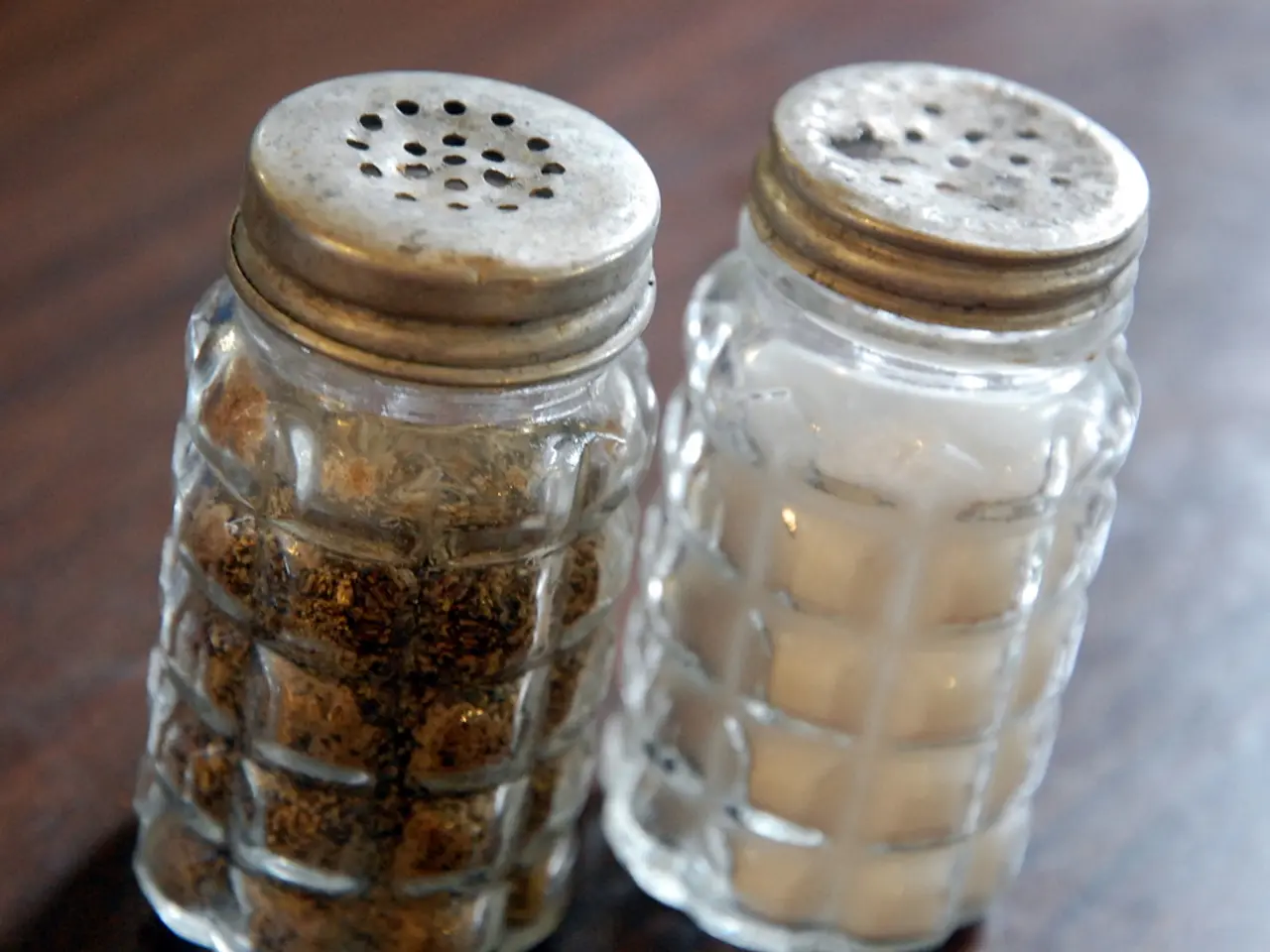Navigating Pulmonary Hypertension: Adopting a Reduced-Sodium Diet Strategies and Reasons Explained
In today's health-conscious world, understanding the impact of diet on our wellbeing is more important than ever. One key component to consider is sodium, a mineral found in salt, which plays a significant role in our bodies.
The Dietary Guidelines for Americans suggest limiting sodium intake to less than 2,300 milligrams (mg) per day, equivalent to about one teaspoon of table salt. However, the American Heart Association (AHA) recommends an ideal limit of 1,500 mg per day for optimal heart health.
Excessive sodium consumption can lead to several health risks. High blood pressure, a condition affecting multiple organs like the eyes, kidneys, heart, and brain, is one such risk. Consuming more than the recommended amount can also trigger frequent headaches and migraines, cause persistent fatigue and low energy, lead to muscle spasms and cramps, affect concentration and cognitive function, elevate heart rate, and potentially impact bone health and raise osteoporosis risk over time.
For individuals with pulmonary hypertension (PH), managing sodium intake is crucial to avoid exacerbating the condition. Patients with PH need to maintain a careful balance of fluids, as excessive sodium can lead to fluid retention and worsen symptoms like shortness of breath. Adhering to a low-sodium diet can help manage PH symptoms by reducing strain on the heart and improving overall cardiovascular health.
It's important to note that if you have pulmonary hypertension, extra salt intake can further strain the heart and lead to swelling in the legs and abdomen, worsening shortness of breath. However, a low-salt diet does not mean an end to tasty food; it can be an opportunity to experiment with new ingredients, recipes, and cooking methods.
Many people are surprised to learn that most of the salt Americans consume comes from processed foods, not the salt shaker. Common high-sodium foods include cheeses, breads and bagels, pizza, sauces (soy, barbecue), soups, cold cuts and cured meats, condiments and garnishes (sauerkraut, pickles, relish, olives), and fresh poultry like chicken, which may be high in sodium due to injection or brining prior to packaging.
Recognizing the importance of a lower-sodium diet, whether for health, reduced shortness of breath, or hospital avoidance, can help with making sustainable changes. Over time, taste preferences can evolve to prefer foods with lower sodium levels. Jazzing up food with spices, lime or lemon juice, fresh herbs, and vinegars can make low-sodium food more flavorful.
Lastly, it's essential to consult your doctor before making significant changes to your diet, especially if you have pulmonary hypertension. They can help you decide how much sodium is appropriate for your diet and whether salt substitutes may be dangerous for you.
- Recognizing the impact of diet on health, paying attention to the recommended sodium intake is crucial for optimal health and wellness. The Dietary Guidelines for Americans suggest limiting sodium intake to less than 2,300 mg per day, while the American Heart Association recommends 1,500 mg per day to support cardiovascular health.
- Excessive sodium consumption can lead to chronic diseases, including high blood pressure, a condition that affects multiple organs. Regularly consuming more than the recommended amount of sodium can also lead to symptoms like frequent headaches, persistent fatigue, and muscle spasms.
- For individuals with medical conditions such as pulmonary hypertension, managing sodium intake is vital to maintain overall health and avoid exacerbating symptoms. A low-sodium diet can help manage symptoms by reducing strain on the heart and improving cardiovascular health.
- In the quest for healthier eating, remember that most of the salt Americans consume comes from processed foods. To reduce sodium intake, choose fresh foods over processed options and be cautious of high-sodium foods like cheeses, pizza, sauces, and cured meats. Experimenting with spices, lime or lemon juice, fresh herbs, and vinegars can help make low-sodium food more flavorful while maintaining a nutritious and balanced diet.




